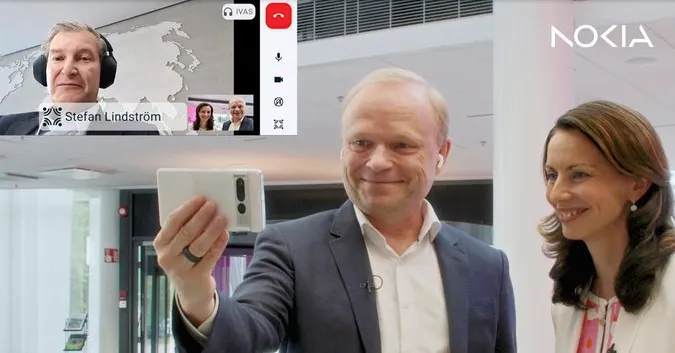All of this is feasible as a result of an upcoming upgrade to 5G.
It was just recently reported by Nokia that the company has successfully made the very first audio and video call using 3D spatial audio. Due to the fact that all phone calls that are currently being conducted over a cellular network are monophonic, there is no potential for spatial audio to be transmitted. This is a very significant issue.
This call, on the other hand, was made over a cellular network by utilizing the 3GPP Immersive Video and Audio Services (IVAS) codec, which enables individuals to hear “sound spatially in real-time.” If you are not familiar with the concept, spatial audio is audio that is split into many channels to give the impression that it is originating from different directions. When it comes to streaming music, this technology has gained a lot of popularity, but video calls are definitely a use-case scenario that is not commonly encountered.
On the other hand, you won’t be able to contact a member of your family to dispute about politics in magnificent 3D audio just yet. An upcoming update to 5G networks, which will be referred to as 5G Advanced, will include the IVAS codec’s inclusion. There are rumors that this upgrade will provide quicker speeds, increased energy economy, and more accurate cellular positioning. From a technical standpoint, 5G Advanced will make it possible to make spatial calls; but, according to Reuters, it will be several years before cellular networks begin delivering the service.
The fact that the IVAS codec will only provide spatial audio in smartphones that have at least two microphones is the sole potential obstacle; nonetheless, this is the case for the majority of smartphones in the market today. The “vast majority” of phones, according to Nokia, should become capable of supporting spatial audio calls once the cellular carriers are on board with the technology.
It’s also important to note that the Nokia company, which is known for selling low-cost devices, did not invent this technology. A number of years ago, HMD was granted a license to use the mobile brand. There is no need to make jokes about flip phones because this component of the corporation is responsible for research and technical development.
Not only Nokia, but other companies are also working to broaden the applications of spatial audio. The technology has already been introduced to hundreds of television series and movies by Netflix, while Audible has recently begun offering spatial audio on a selection of its original titles and podcasts.

